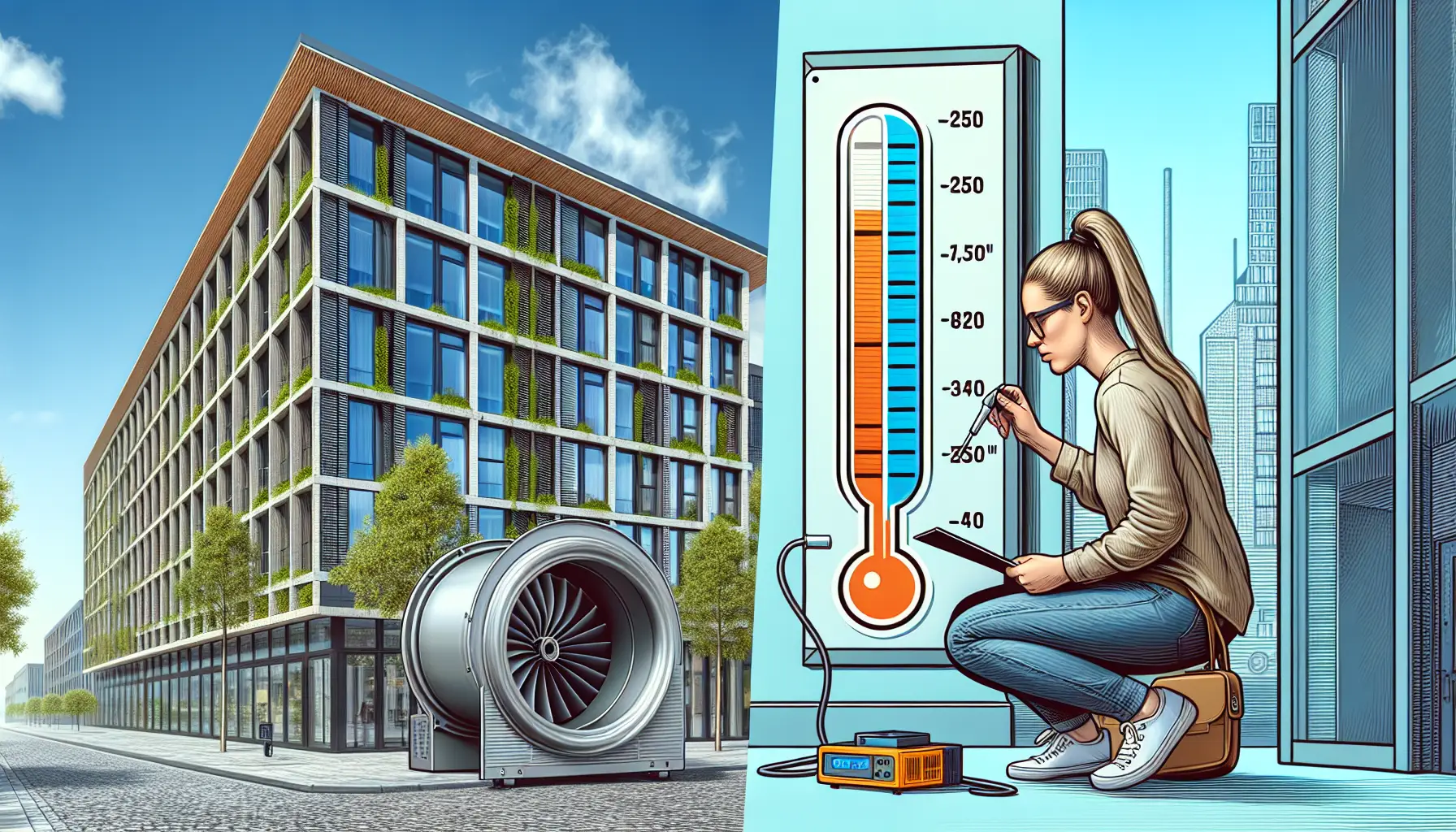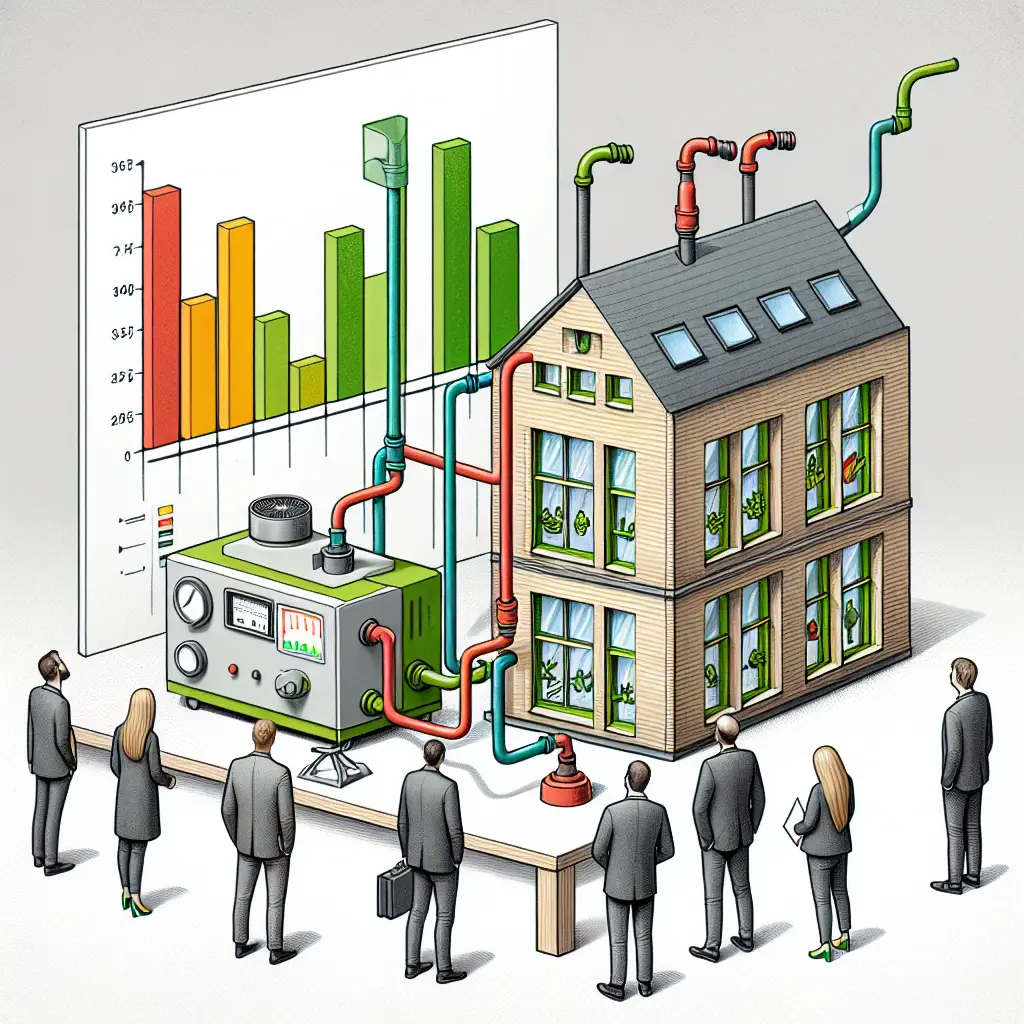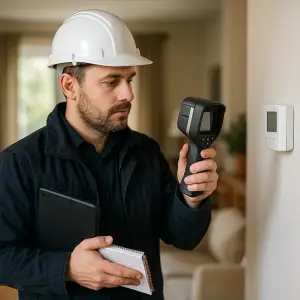Airtightness Testing: A Gateway to Energy Efficiency in Buildings
Airtightness testing has become an essential component in the push towards energy-efficient building designs, not just an optional extra. With the growing understanding of climate change impacts, the necessity for improved energy conservation in residential and commercial properties is more significant than ever. Here is a comprehensive explanation of airtightness testing and its critical role in enhancing energy efficiency.
Purpose and Importance
Airtightness testing serves the primary purpose of measuring the extent to which air can escape through gaps, slices, or perforations in a building’s envelope. Accurately assessing this leakage is crucial in maintaining energy efficiency, reducing unnecessary energy consumption, and minimising a property’s environmental impact. In the UK, the importance of airtightness is underscored by its inclusion in the Building Regulations, highlighting it as a mandatory step to ensure new constructions meet high airtightness standards.
Why Does Airtightness Matter?
- Energy Consumption: Airtightness directly affects how much energy a building uses. Leaky buildings lose significant amounts of heat, leading to increased energy demands for heating or cooling systems.
- Comfort Levels: Poorly sealed properties often result in uncomfortable living or working conditions due to draughts and unexpected temperature dips.
- Regulatory Compliance: Failing to meet the requisite airtightness standards can lead to costly renovations and a delay in obtaining building compliance certifications.
Methodology of Airtightness Testing
The most prevalent form of airtightness testing is the blower door test, which revolves around setting up a fan in a doorway to modulate pressure differentials inside and outside the building. This technique enables testers to measure how much air is lost through unintended leakages. The blower door test is celebrated not only for its efficacy in measuring air leakage rates but also for pinpointing precise leakage locations like unsealed ducts, chimneys, window frames, and door perimeters.
The Procedure
- Installation: A fan is sealed within an external door frame.
- Pressure Adjustment: The fan either pumps air into or draws air out of the building, creating a pressure difference.
- Measuring Leakage: The difference in pressure allows technicians to measure air leakage, often employing infra-red technology for precise detection.
Metrics and Standards
In airtightness testing, performance is measured in cubic metres of air leaking per square metre of the building’s envelope per hour at a set pressure of 50 Pascals, annotated as m³/hr/m²@50Pa. For instance, an air permeability rating surpassing 10m³/h/m² at 50Pa indicates substantial air leakage and is considered a fail under most regulations.
Compliance Thresholds
Achieving a lower air permeability score is an indicator of better airtightness:
- New Builds: Require stringent regulations with typically a threshold below 10m³/h/m² at 50Pa for compliance.
- Energy Efficient Designs: Often aim for ultra-low values, sometimes below 3m³/h/m² at 50Pa.
Energy Efficiency Implications
Air leakage is a notorious enemy of energy efficiency, influencing numerous elements related to energy consumption and environmental footprint.
- Unwanted Heat Loss: Air leaks cause heat to escape, which necessitates additional energy for heating.
- Occupant Discomfort: Drafty interiors lead to uncomfortable environments varying significantly in internal temperature.
- Elevated Heating Costs: Extra heating because of leakage results in increased bills for occupants, a growing financial burden.
- Increased CO2 Emissions: The extra energy used manifests in heightened carbon footprints, contrary to sustainability objectives.
Benefits of Airtightness Testing
Regular airtightness testing and enhancing the building envelope can drive substantial benefits for building owners and occupants.
- Enhanced Energy Performance: Identifying and remedying leaks can drastically improve a building’s energy profile, leading to lower consumption and cost.
- Improved Comfort Levels: Addressing air leakages reduces draughts, achieving stable indoor environments conducive to comfort and productivity.
- Environmental Impact Reduction: Lesser dependency on heating and cooling aids in minimising the environmental footprint, aligning with global sustainability goals.
Integration with EPC Ratings
The integration of airtightness data into Energy Performance Certificates (EPCs) using the new RdSAP 10 method offers a more nuanced representation of a building’s energy efficiency. By incorporating detailed airtightness information, EPCs offer better insights, aiding property owners and developers in making informed, energy-efficient choices. Our experts at Ratio Seven can guide you through understanding and utilising EPC data effectively.
Compliance and Regulations
The UK’s Building Regulations make airtightness testing mandatory for both new domestic and non-domestic builds. The aim is to pressurise the newly constructed buildings into complying with energy efficiency standards from inception. Retrofit projects, particularly those classified as high-risk under PAS 2035 standards, might also necessitate an airtightness assessment to ensure that applied energy efficiency measures deliver the anticipated results.

FAQs
1. What is the principle behind blower door tests?
Blower door tests operate on the principle of pressure differences. By creating a differential in pressure between indoor and outdoor environments, the tests can calculate air leakage rates accurately. The technique’s precision allows specialists to detect even the smallest leaks, making it invaluable for enhancing energy efficiency.
2. How does airtightness impact a building’s heating requirements?
Airtightness has a direct impact on a building’s heating requirements. Poor airtightness, due to leaks, results in heat escape. This loss escalates the demand for additional heating to maintain habitable temperatures, thus raising energy consumption and heating costs.
3. Is airtightness testing required for existing buildings?
While airtightness testing is mandated for new constructions, existing buildings can benefit enormously from the procedure. Many retrofits and refurbishment projects incorporate airtightness standards, especially when upgraded energy performance is a desired outcome. The tests help identify inefficiencies that can lead to substantial energy savings following corrective measures.
Airtightness testing and energy efficiency?
In conclusion, airtightness testing is an integral part of establishing energy-efficient buildings, providing essential insights into air leakage which impedes energy conservation. Its impact spans from improved energy performance and occupant comfort to regulatory compliance and environmental conservation. For those embarking on building projects or aiming to improve existing property energy performance, consulting with experts, such as Ratio Seven, can offer invaluable guidance through the intricate process of airtightness testing and its associated benefits. Through strategic assessment and improvement, buildings can not only meet but exceed regulatory standards, ushering in an era of sustainable living and construction.




